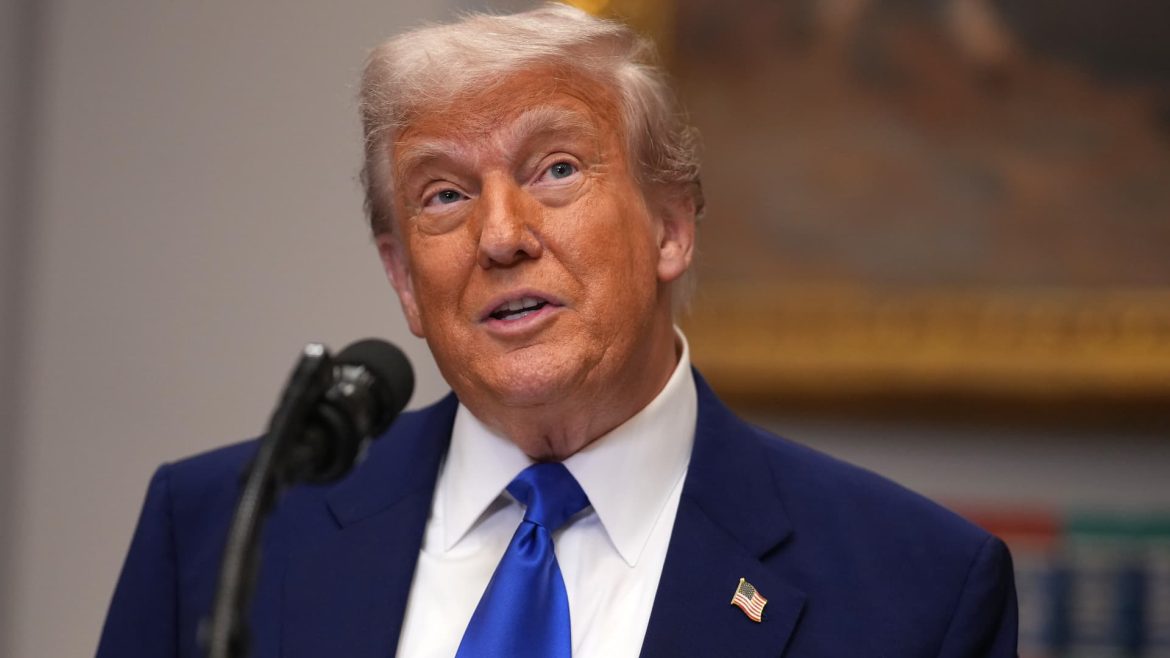The Trump-China Trade Agreement: A Comprehensive Analysis
Introduction
The trade relationship between the United States and China has been a contentious issue, marked by tariffs, countermeasures, and economic uncertainty. Recent developments, however, have brought a glimmer of hope for a more open and mutually beneficial trade environment. President Donald Trump announced that China has agreed to “open itself up to American business” and suspend or remove non-tariff countermeasures imposed since April 2. This agreement, which includes a 90-day pause on most tariffs, has significant implications for both countries and the global economy.
The Tariff Truce
Immediate Impact on Tariffs
The agreement between the U.S. and China to temporarily slash tariffs for 90 days marks a significant shift in their trade relationship. The U.S. has agreed to pause most of the tariffs it imposed on Chinese goods, while China has agreed to suspend its initial 34% tariff on the U.S., retaining only a 10% tariff during this period. This pause is expected to ease the economic strain on both countries, which have been grappling with the financial impact of the trade war.
Market Response
The announcement of the tariff truce has had a positive impact on global markets. U.S. equity futures rallied, with the S&P 500 futures soaring 3% and Dow Jones Industrial Average futures rising by over 900 points, or 2.3%. This market surge reflects investor optimism about the potential for a more stable trade environment and reduced economic uncertainty.
Economic Implications
For the United States
The U.S. economy stands to benefit from the tariff pause in several ways. The average tax increase of nearly $1,300 per U.S. household due to Trump’s tariffs is expected to be mitigated during this period. Additionally, the agreement to open up China’s markets to American businesses could lead to increased exports and economic growth. However, the long-term impact will depend on whether the two countries can reach a formal agreement within the 90-day window.
For China
China, on the other hand, faces both opportunities and challenges. The suspension of non-tariff barriers could lead to increased foreign investment and technological transfer. However, the 10% tariff retained by China could still pose a barrier to U.S. exports, and the country must navigate the complexities of opening its markets while maintaining economic stability.
Future Prospects
Potential for Long-Term Agreement
The 90-day pause provides a critical window for both countries to negotiate a more comprehensive trade agreement. Key areas of discussion will include tariffs, non-tariff trade barriers, currencies, and subsidies. If successful, this could lead to a “total reset” in U.S.-China trade relations, as suggested by President Trump.
Risks and Uncertainties
Despite the optimism, there are several risks and uncertainties. The agreement still needs to be signed, and the outcome of the negotiations remains uncertain. Moreover, if no formal agreement is reached within the 90-day period, tariffs could go back up, potentially leading to further economic turmoil.
Conclusion
A New Chapter in U.S.-China Trade Relations
The agreement between the U.S. and China to temporarily slash tariffs and open up markets marks a significant step towards a more stable and mutually beneficial trade relationship. While the 90-day pause offers a window of opportunity for negotiations, the future of U.S.-China trade relations remains uncertain. The success of this agreement will depend on the ability of both countries to navigate complex trade issues and reach a comprehensive deal that benefits both economies. The world watches with bated breath as this new chapter in U.S.-China trade relations unfolds, hoping for a resolution that brings stability and growth to the global economy.


